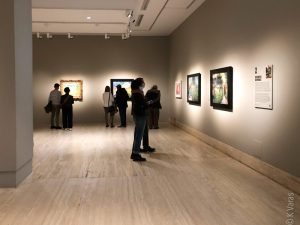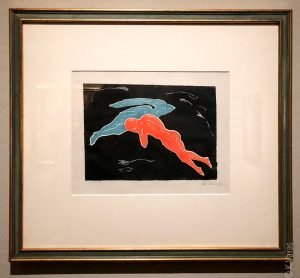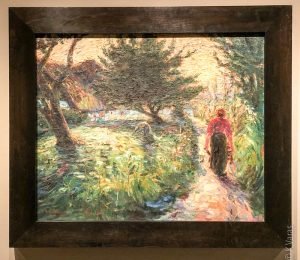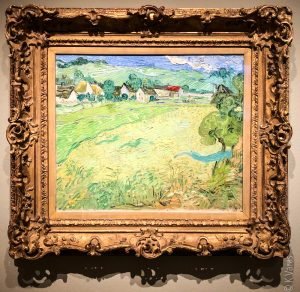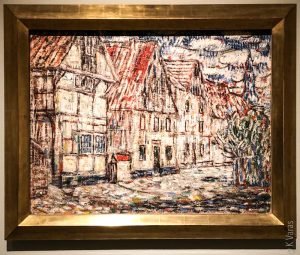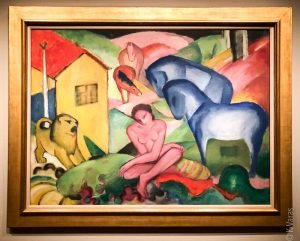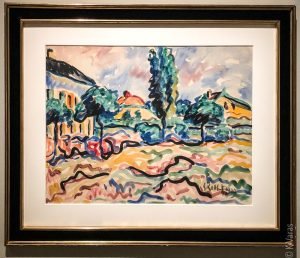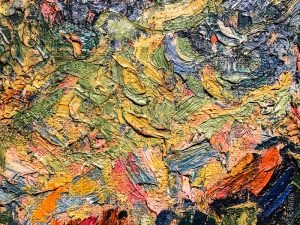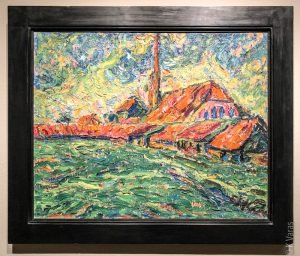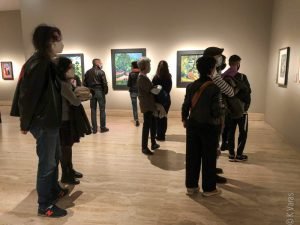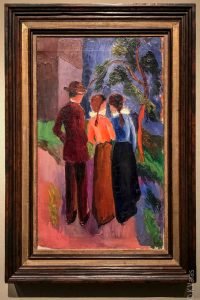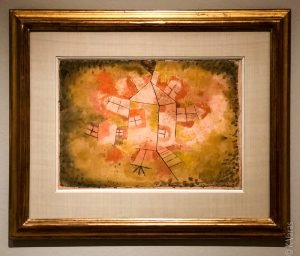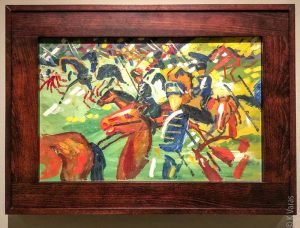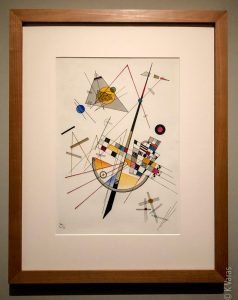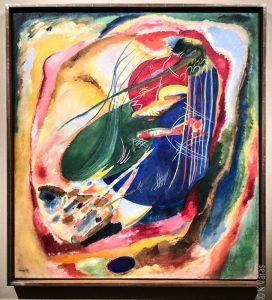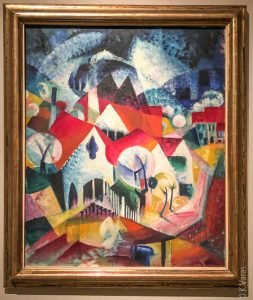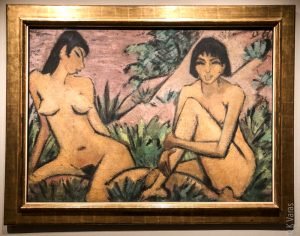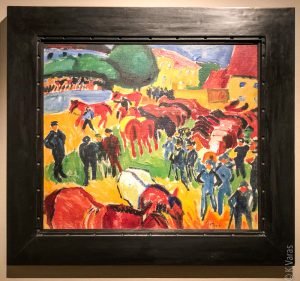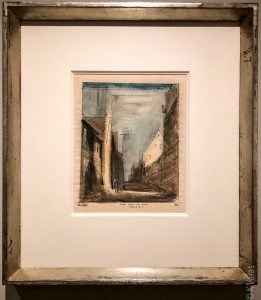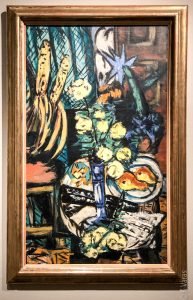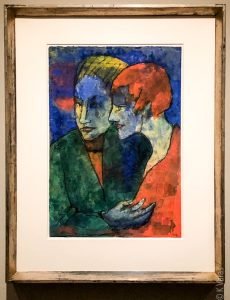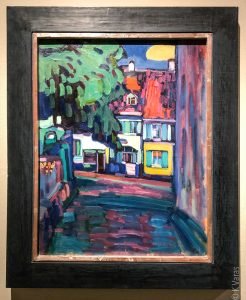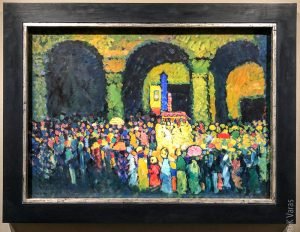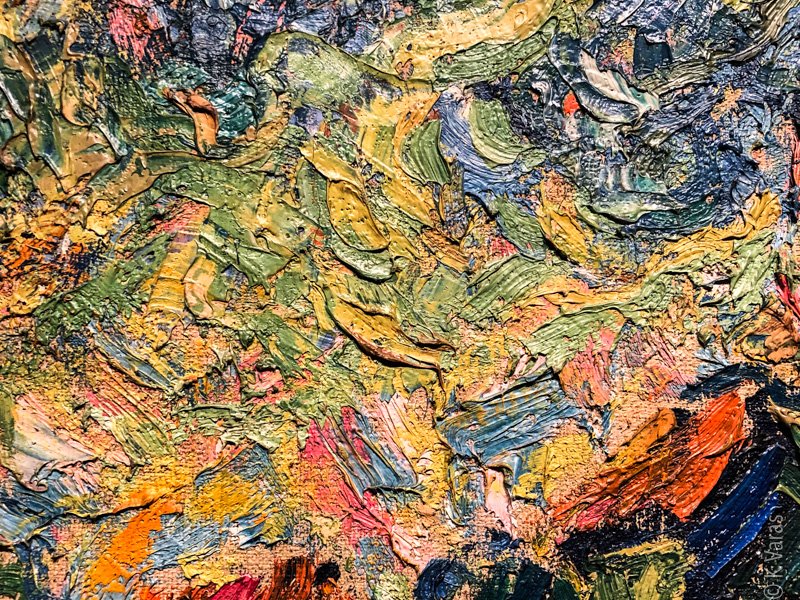
The Expressionists at Thyssen
The Baron Thyssen-Bornemisza and his wife, Carmen, both seemed to have very similar tastes to mine, lucky me! There is very little I don’t like in this whole museum so I had to tear myself away and run downstairs to see the special Expressionists exhibit I had an entrance time for. When I got there I wasn’t really sure what to do but since there were people lining up already I joined them. Slowly but surely I moved forward as everyone was let in at a somewhat steady pace. This is the biggest crowd I’ve seen in a museum so far and I had to get mentally prepared for space sharing. Finally it was my turn to step inside the first room and start feasting, visually, of course.

I may have mentioned that I’m a big fan of pretty things, well designed things, and colourful things. Yeah, I know, that’s pretty broad, but the more I look at art, the clearer is my idea of what appeals to me. I love colour. I love interesting subjects. And I am equally happy to see realism and abstraction in paintings. Which is probably why I do like much in the styles of Impressionism, Post-Impressionism, and, now I’ve learned, Expressionism too. To help myself figure all this out and to provide a bit of a service to you too, my dear reader, I’ve decided to provide examples. I learn best visually so this may help:
Impressionism:
Impressionism is perhaps the most important movement in the whole of modern painting. At some point in the 1860s, a group of young artists decided to paint, very simply, what they saw, thought, and felt. They weren’t interested in painting history, mythology, or the lives of great men, and they didn’t seek perfection in visual appearances. Instead, as their name suggests, the Impressionists tried to get down on canvas an “impression” of how a landscape, thing, or person appeared to them at a certain moment in time. This often meant using much lighter and looser brushwork than painters had up until that point, and painting out of doors.
https://www.theartstory.org/movement/impressionism/
When you see works by Édouard Manet, Claude Monet, Edgar Degas, Pierre-Auguste Renoir, or Camille Pissarro, you’re looking at Impressionist works. There were a few of those on the 2nd floor and here is a reminder:
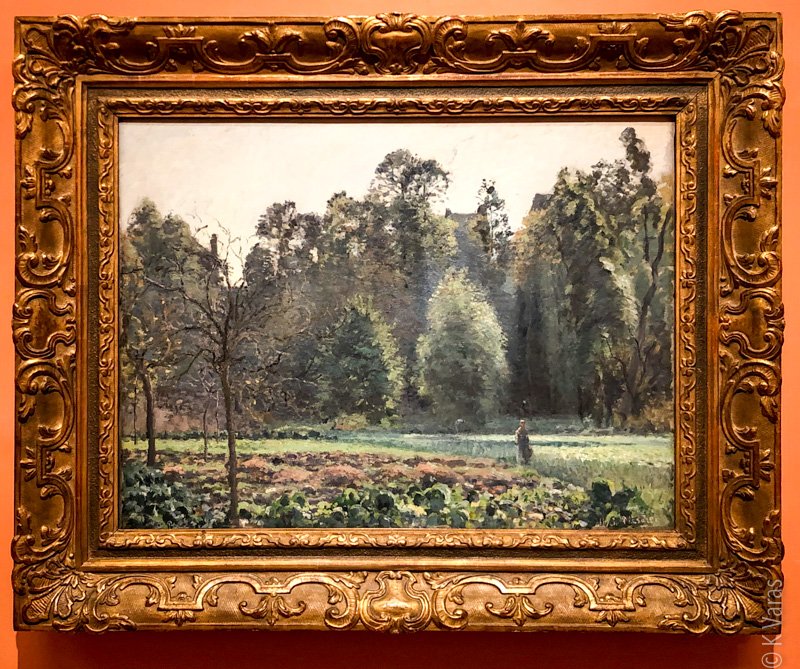
Post-Impressionism:
The stylistic variations assembled under the general banner of Post-Impressionism range from the scientifically oriented Neo-Impressionism of Georges Seurat to the lush Symbolism of Paul Gauguin, but all concentrated on the subjective vision of the artist. The movement ushered in an era during which painting transcended its traditional role as a window onto the world and instead became a window into the artist’s mind and soul.
https://www.theartstory.org/movement/post-impressionism/
The most famous artists creating under the guise of Post-Impressionism were, of course, my two favourites: Paul Gauguin and Vincent van Gogh, as well as Paul Cézanne, Georges Seurat, and Henri de Toulouse-Lautrec. There will be more examples on floor 1 later.
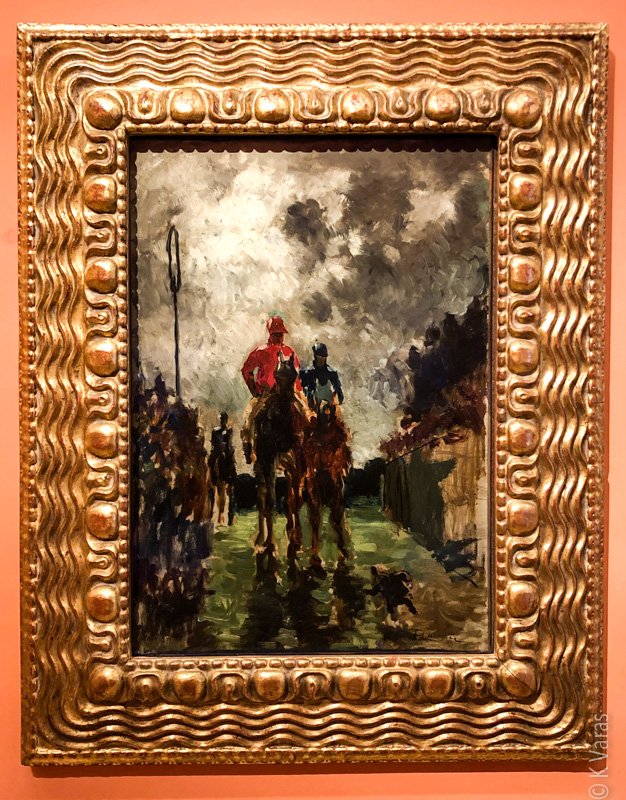
Expressionism:
Expressionism emerged simultaneously in various cities across Germany as a response to a widespread anxiety about humanity’s increasingly discordant relationship with the world and accompanying lost feelings of authenticity and spirituality. In part a reaction against Impressionism and academic art, Expressionism was inspired most heavily by the Symbolist currents in late-19th-century art. Vincent van Gogh, Edvard Munch, and James Ensor proved particularly influential to the Expressionists, encouraging the distortion of form and the deployment of strong colours to convey a variety of anxieties and yearnings.
https://www.theartstory.org/movement/expressionism/
Besides the three mentioned above, Wassily Kandinsky, Emil Nolde, and Egon Schiele are good examples, and there was plenty of of their work in the exhibit.
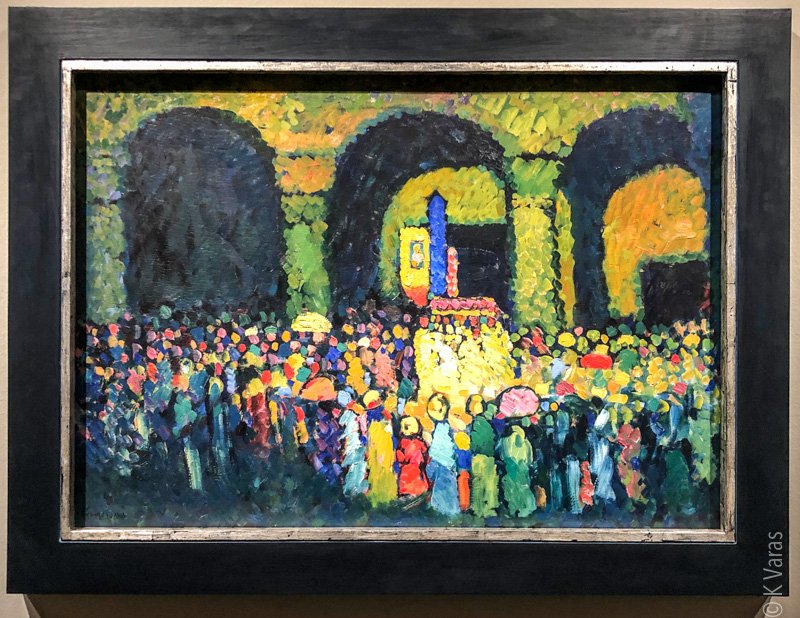
What I’m finding, of course, is that many of these artists progressed from one style to another, and I found a van Gogh, Gauguin, a Picasso or two, many August Mackes, and even more Lyonel Feiningers, whom I quite like too now, it seems. I guess the bottom line is that I love this sort of art and wish this collection became a permanent one because so many of the pieces I want to visit over and over again. Unfortunately, this exhibition will be gone by the time I go back to Madrid in May. Oh well, I’m sure something new will blow my mind then. In the meantime, please do enjoy my little gallery below.


